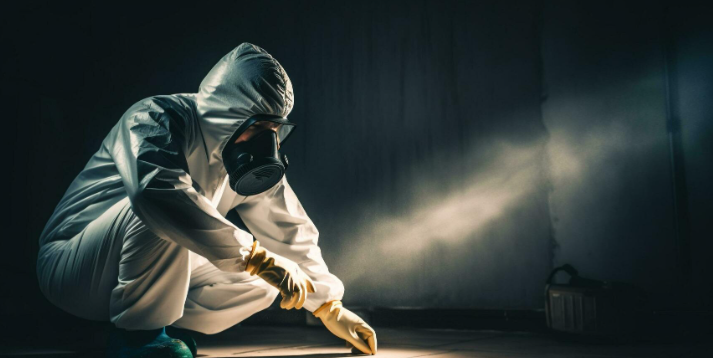
Biohazard cleanup 4 Levels: What They Are and Why We Use Them
Biohazard cleanup stands as a cornerstone in preserving public health and safety by effectively managing and disposing of hazardous materials and waste. To confront these risks systematically, biohazard cleanup operations are categorized into four specific levels. Within this blog post, we’ll delve into these four biohazard levels, examining their significance, content, and pivotal role in safeguarding both the environment and human well-being.
Biohazard Cleanup: What is it?
Before delving into the levels of biohazard cleanup, it’s essential to clarify what biohazard cleanup entails. Biohazard cleanup encompasses the safe and proper management, removal, and disposal of hazardous materials, spanning biological, chemical, and infectious waste. These materials, if mishandled, pose severe risks to human health, the environment, and the community.
Moreover, biohazard cleanup professionals undergo training to handle a diverse array of hazardous substances, ranging from bloodborne pathogens to chemical spills and infectious waste. The established levels of biohazard cleanup serve as a framework, aiding professionals in comprehending the nature and severity of the materials they encounter. This system ensures that the appropriate precautions are taken to mitigate risks effectively.
The 4 Biohazard Levels
-
Biohazard Level 1 (BSL-1): Low Risk
- Risk Level: Lowest, least dangerous
- Materials: Generally harmless, minimal risk to health
- Lab Focus: Basic research, teaching, simple diagnostics
- Key Practices:
- Using basic lab equipment
- Regular hand washing
- Properly handling non-contaminated sharps
- Displaying biohazard signs
- No eating, drinking, or smoking in the lab
- Using Personal Protective Equipment (PPE) as needed
Biohazard Level 2 (BSL-2): Moderate Risk
- Risk Level: Moderate, more infectious agents like salmonella and hepatitis
- Safety Measures: Increased compared to BSL-1
- Includes:
- More stringent cleanup procedures
- Biohazard signs and controlled access
- Personal protective gear (PPE)
- Safe disposal of biohazardous waste through autoclaving or incineration
Biohazard Level 3 (BSL-3): High Risk
- Risk Level: High, serious or potentially lethal diseases
- Materials: Agents causing diseases like tuberculosis and HIV
- Containment Measures:
- Significantly more stringent than BSL-2
- Strict protocols and specialized equipment required
- Thorough decontamination of waste via incineration, autoclaving, or chemical treatment
Biohazard Level 4 (BSL-4): Maximum Risk
- Risk Level: Most dangerous, life-threatening pathogens like Ebola and smallpox
- Containment: Highest level required
- Facilities: Secure, isolated areas for research and cleanup
- Decontamination: Most rigorous processes for waste, including incineration and thorough chemical treatment
- Safety Measures: Extremely stringent, continuous monitoring to protect workers and the community

Why Do We Use Biohazard Levels?
The classification of biohazard levels is crucial for several reasons:
- Safety: Biohazard levels ensure that appropriate safety measures and equipment are used to minimize the risk to laboratory workers and the community.
- Containment: The classification helps prevent the accidental release of hazardous materials that could lead to public health emergencies.
- Regulation: Biohazard levels are often subject to stringent regulations and guidelines to ensure that waste is properly managed and disposed of.
- Public Health Protection: These levels protect public health by ensuring that hazardous materials are contained and destroyed, preventing the spread of diseases.
Final Word
CSI – Crime Scene Cleaners Chicago is pivotal in upholding public health and safety. The categorization of materials into the four biohazard levels, ranging from BSL-1 to BSL-4, serves as a fundamental guide. These levels not only categorize materials based on risk but also provide essential direction for the safe handling, containment, and disposal of hazardous substances. Through adherence to these levels and established protocols, we can effectively mitigate risks, protect our environment, and curtail the spread of perilous diseases. Ultimately, this concerted effort ensures the well-being and safety of our communities.
